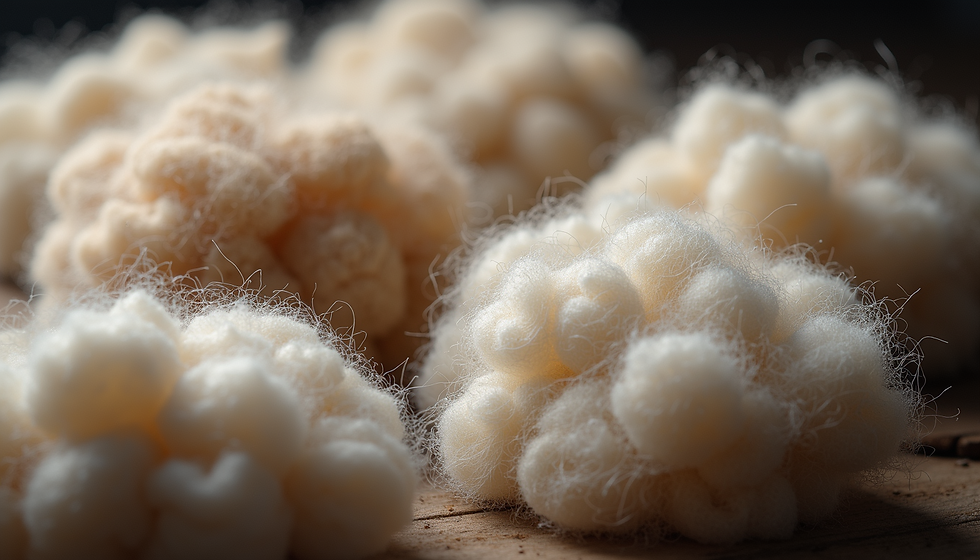The Truth About Anti-Pilling: Why Some Sweaters Last Longer
- charlottegao1
- Jun 20
- 1 min read
Have you ever worn a sweater a few times only to see tiny balls of fuzz appear on the surface? That’s pilling — and we take it seriously.
🧶 What Is Pilling?

Pilling happens when loose fibers on the surface of the fabric rub against other surfaces (like bags, arms, or furniture), causing them to twist into small balls. It’s one of the most common customer complaints in knitwear.
What Causes It?
Yarn with short or loose fibers
Soft finishes without stabilization
Tight contact points (elbows, underarms, etc.)
High-friction fabrics (like viscose or soft blends)
What Is Anti-Pilling?
Anti-pilling is a combination of yarn selection and finishing techniques that help reduce fuzz formation and extend the sweater’s clean, new look.
We use three main strategies:
Anti-pilling yarns – tightly spun and tested for abrasion
Pre-wash & de-fuzzing – removes unstable surface fibers
Stabilizing treatments – like steam setting and heat pressing
Does It Really Work?
Yes. We’ve seen sweaters with anti-pilling treatment last 2x–3x longer in retail conditions compared to untreated equivalents. That means fewer complaints, higher brand loyalty, and a better overall product reputation.
At our factory, we offer anti-pilling options for most of our yarns — including blended fibers like:
43% Viscose / 23% Polyester / 17% Polyamide / 15% Metallic
A beautiful yarn with a soft sheen — and even better with the right anti-pilling care.
Want to upgrade your knitwear for durability?
[Let’s Plan a Smarter Finish →]



Comments